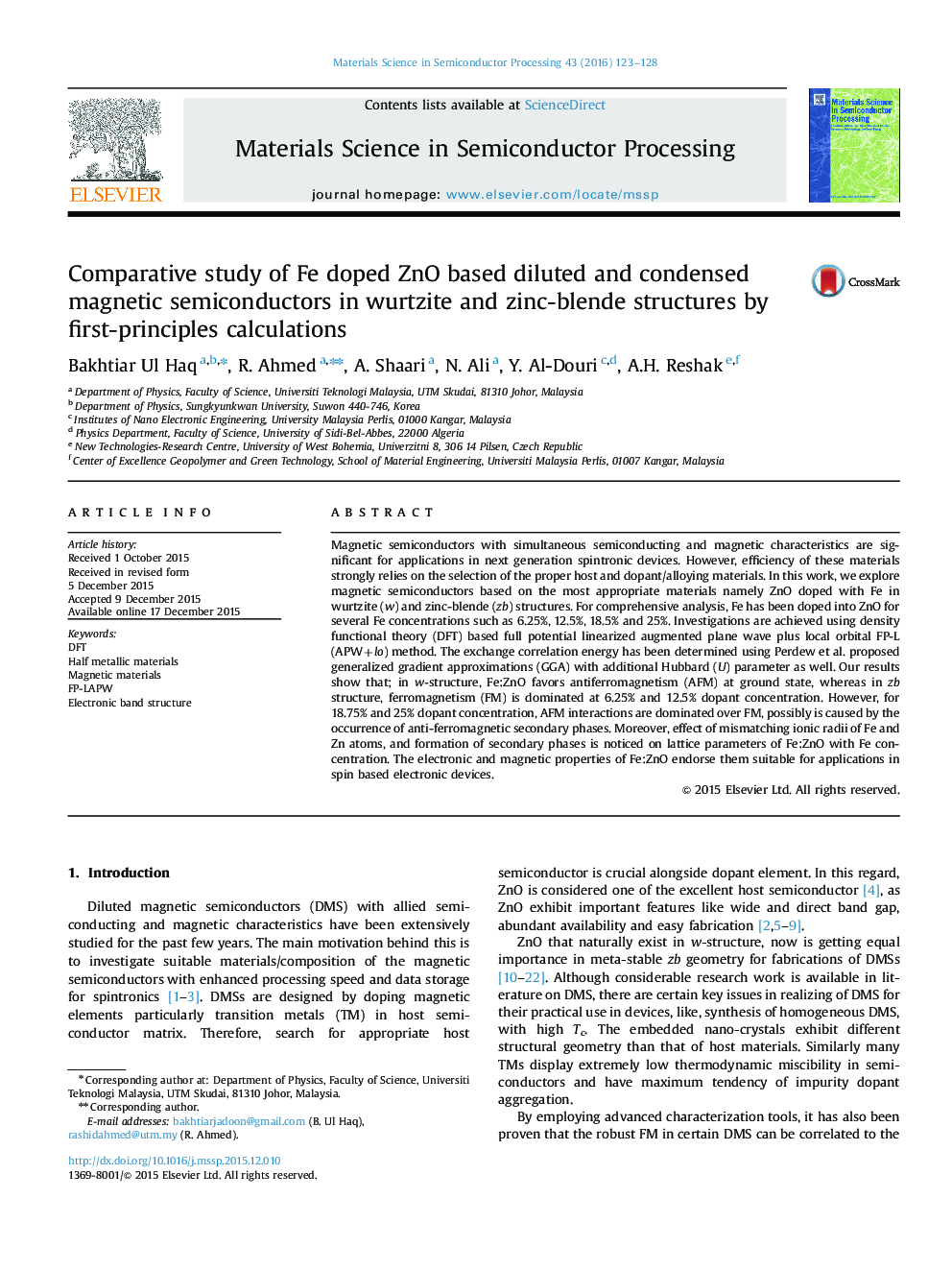| کد مقاله | کد نشریه | سال انتشار | مقاله انگلیسی | نسخه تمام متن |
|---|---|---|---|---|
| 727929 | 1461404 | 2016 | 6 صفحه PDF | دانلود رایگان |
Magnetic semiconductors with simultaneous semiconducting and magnetic characteristics are significant for applications in next generation spintronic devices. However, efficiency of these materials strongly relies on the selection of the proper host and dopant/alloying materials. In this work, we explore magnetic semiconductors based on the most appropriate materials namely ZnO doped with Fe in wurtzite (w) and zinc-blende (zb) structures. For comprehensive analysis, Fe has been doped into ZnO for several Fe concentrations such as 6.25%, 12.5%, 18.5% and 25%. Investigations are achieved using density functional theory (DFT) based full potential linearized augmented plane wave plus local orbital FP-L(APW+lo) method. The exchange correlation energy has been determined using Perdew et al. proposed generalized gradient approximations (GGA) with additional Hubbard (U) parameter as well. Our results show that; in w-structure, Fe:ZnO favors antiferromagnetism (AFM) at ground state, whereas in zb structure, ferromagnetism (FM) is dominated at 6.25% and 12.5% dopant concentration. However, for 18.75% and 25% dopant concentration, AFM interactions are dominated over FM, possibly is caused by the occurrence of anti-ferromagnetic secondary phases. Moreover, effect of mismatching ionic radii of Fe and Zn atoms, and formation of secondary phases is noticed on lattice parameters of Fe:ZnO with Fe concentration. The electronic and magnetic properties of Fe:ZnO endorse them suitable for applications in spin based electronic devices.
Journal: Materials Science in Semiconductor Processing - Volume 43, 1 March 2016, Pages 123–128
